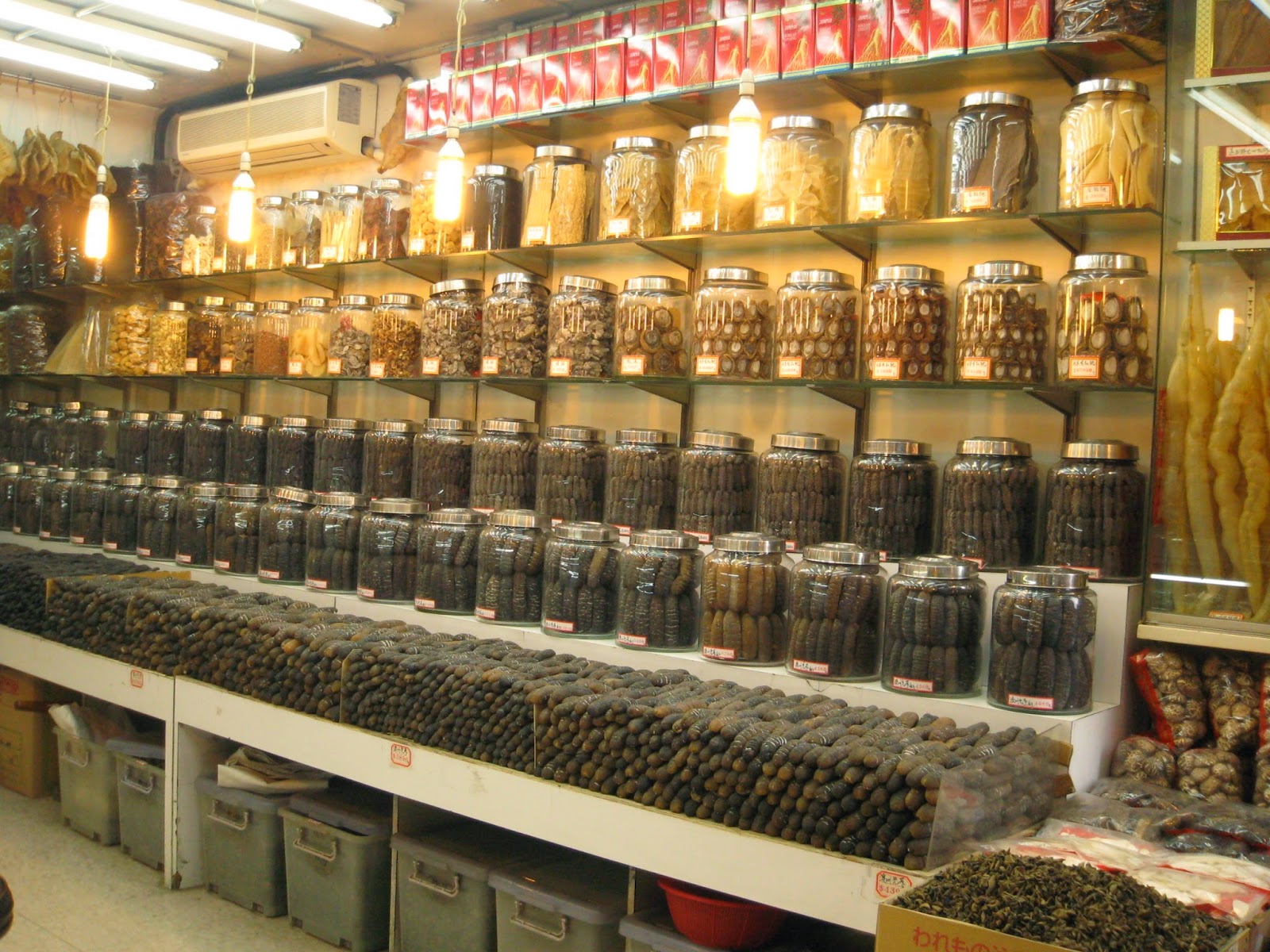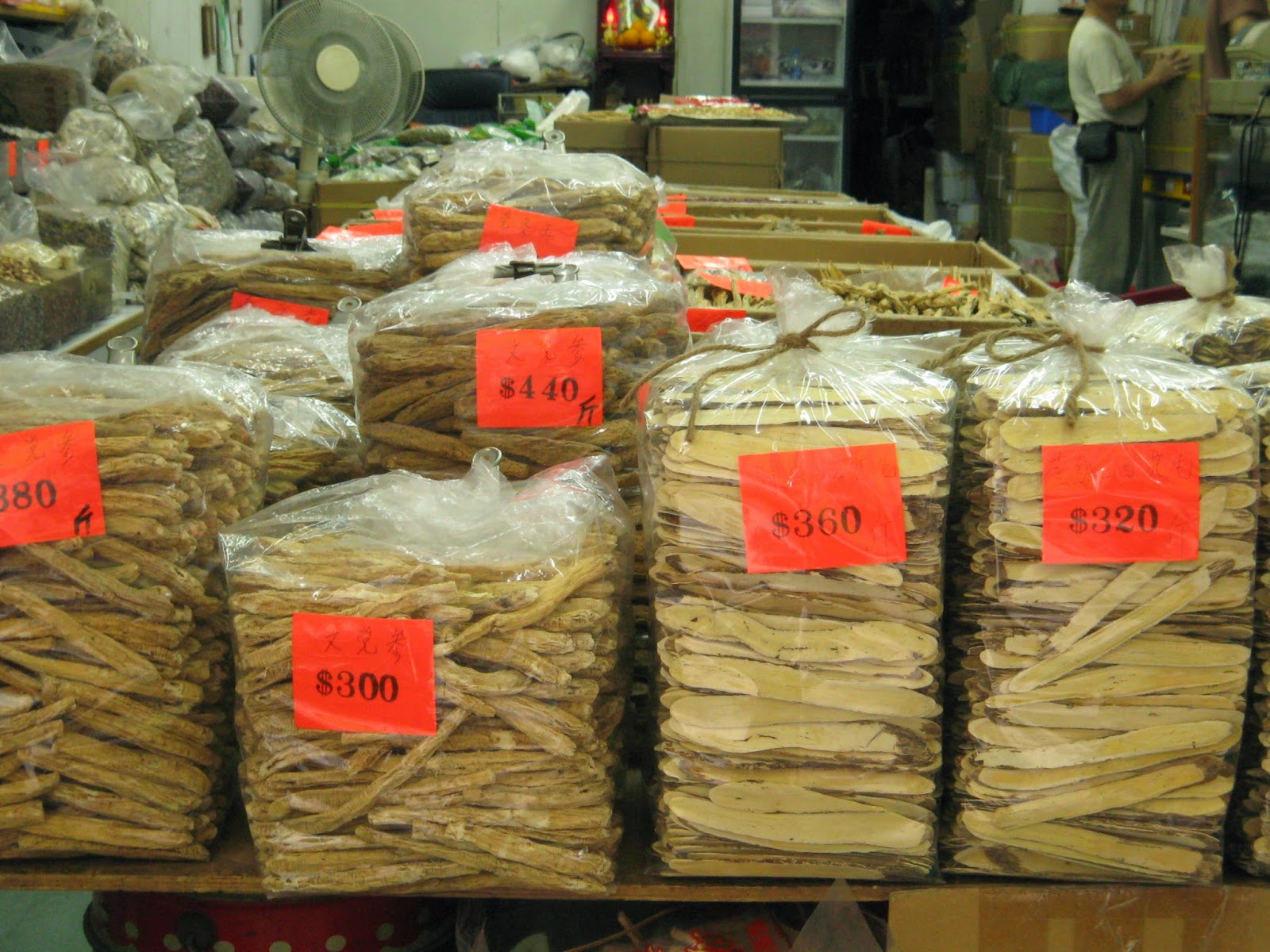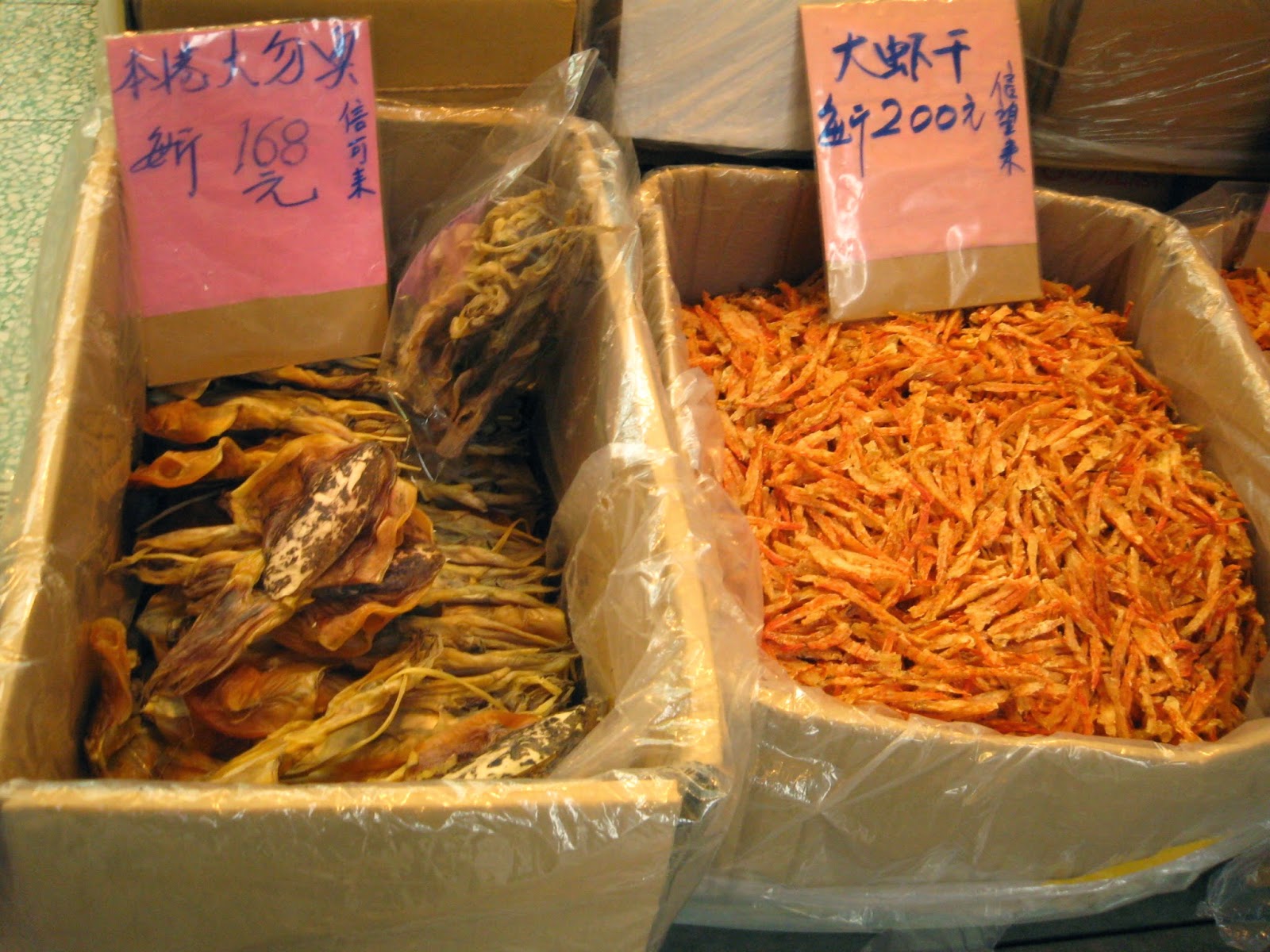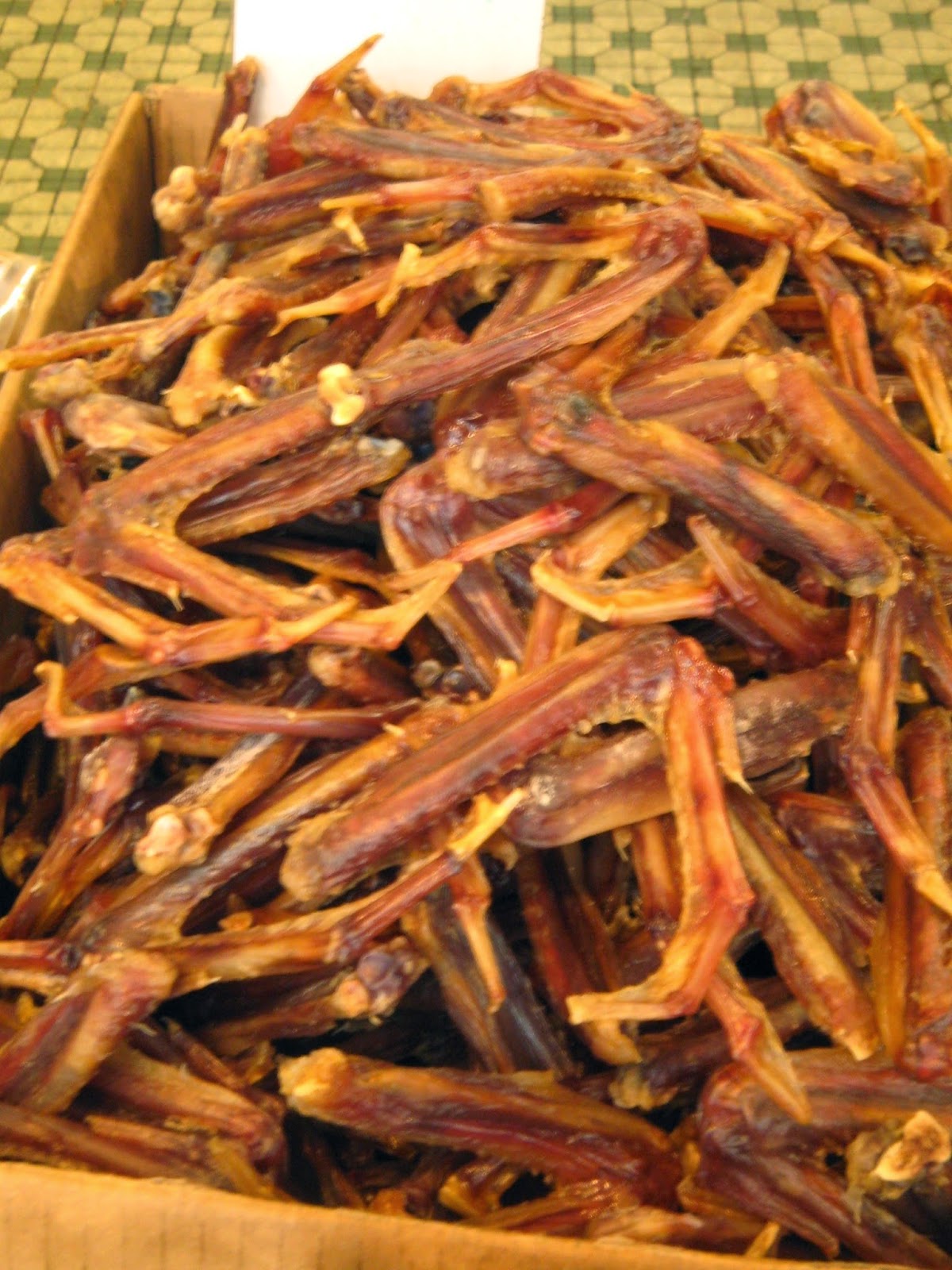When I was booking my hotel for my four-day stay in Hong Kong, a major part of the reason I decided on one in Sheung Wan, apart from its price, was its being located amidst the famous dried seafood market in the island.
The reviews weren't that great, from a non-Asian point of view. The main drawbacks, according to the reviews, were that the subway doesn't service the area, and the off-putting "smell" of the market.
That trains do not reach Sheung Wan didn't bother me, as I am used to walking. And further research revealed buses and trams actually serviced the area. My hotel's website also indicated there was a free service shuttle to Hong Kong Central, where my training venue was located.
As for the "smell," it was a minor inconvenience. I was actually jumpingly excited knowing that I will be living just beside a large - as in blocks and blocks of it! -Chinese market for four days!
And so here is a peep into it. I was a bit frustrated, because in the mornings when I left for my training the stalls were still closed, and when I arrived back in the area in the evenings they were already shuttered. So on my last day in Hong Kong, instead of visiting Kowloon, or even Macau - the ferry terminal was just across the road from my hotel - I indulged myself in a long and winding market stroll.
To say I was shocked is an understatement. I had got this picture in my head of an indoor market in a large hall, much like the public markets in the Philippines. But in Sheung Wan everything was street-side, with row upon row of market stalls along three perpendicular avenues for blocks and blocks.
I was also imagining the din of vendors, calling to shoppers to come look at their wares, and a heap of products to dig into. But no, all things for sale were neatly and systematically arranged, inside clean stalls that didn't emit any strong smell, and the din came from only the trams and buses that passed to and fro in the adjacent streets.
What made a lasting impression to me was the variety of sea cucumbers on sale. There were stalls solely dedicated to this Chinese delicacy, selling them in all kinds of color, size, texture. I didn't know how to distinguish one from the other, of course, so I just contented myself in soaking the sights.
Maybe like blue cheese, the moldy ones probably cost more? Or are even preferred more?
Cracklings by the sack just delivered.
I don't even know what these are for. They look like the shell I used to feed to my parakeet.
My favorite area was the collection of stalls by a side alley selling all kinds of dried shell flesh. It was a bright place, heightened by the orangey hue of the merchandise.
Dried scallops in varying sizes and shapes, and from different locations across the globe, made my heart skip beats.
Shrimps and prawns, too, plus dried squid and octopus from miniature to giant. Fried dried squid is one of my favorite things to eat for breakfast, and I pine for the smell of grilling dried squid in the afternoons. Which is why I never thought of living outside of Asia - I cannot forsake the smell of dried squid.
Dried jelly fish. I have never tasted one, but much as I wanted to, I didn't venture to buy. To my regret. Next time.
More dried jellyfish, in the foreground. In the background are dried dulong, which came as a surprise. I love to eat crisp-fried daing na dulong, too, for breakfast.
Wee oysters, medium oysters, large oysters
It was truly a learning experience, going around this market. I never saw dried oysters before. In Pangasinan, as well as Cavite, we have heaps and heaps of oysters in varying sizes, but they are all sold, and eaten, fresh. Sometimes they're not even cooked at all.
This one takes the prize for being the largest and plumpest oysters
I've seen dried seahorses in the Chinese pharmacies in Binondo (Manila Chinatown), so this was old news.
But this one was new. I thought for a while they were scouring mats. I'd love to know how these black seaweed are eaten.
Octopus tentacles
Fins of what fish I don't know, though I'm certain they're not from sharks
Are starfish even eaten?
The tuyo - Pinoy slang for dried salted fish - area
All is not seafood. There were strings of Chinese sausages and dried chicken drumsticks.
Chicken intestines, too
And gizzards
By the length of these wings, I'm guessing they're not white-leghorn. Probably not even chicken at all.
Dried noodles for the dried meats
And various kinds of teas
Dried chrysanthemum flowers. There was this coffee shop in Binondo which used to serve pots of chrysanthemum tea. I brought my friends there, and we all found the tea bitter, and it made our heads ache, but we always ordered a pot whenever we were in the area, just for kicks. Sadly the cafe doesn't serve it anymore.
After my market stroll I got to eat this steamed atop the chicken dim sum at Lin Heung Kui.
There was one stall selling all manners of fermented vegetables.
And pickled things from the sea.
Nuts, beans and legumes being dried under the sun along a side alley
Shopping for pasalubong
It is always an enriching experience strolling around markets. This one was so stimulating, visually and cerebrally. It was one morning well-spent, and is a highly recommended prelude to lunch at Lin Heung Kui.
Related Posts
















































2 comments:
Leterally it was an outstanding and colorful read and experience. The hong kong sheung wan dried seafood attraction you upheld here was totally fascinating and juice creating. The dry food in the photos look so so colorful and tempting. Perhaps seafood is more nutricious than other regular food? If someone outsider want to have those, how to get? Is there any option like order picking systems or online ordering system?
Buy Fresh & Frozen Sea Foods Online with Queins for premium quality, unbeatable freshness, and doorstep convenience. From squid to prawns, every product is sustainably sourced and hygienically packed. If you love flavour-rich seafood delivered fast, Queins is the perfect choice. Order now and enjoy restaurant-quality seafood at home.
Post a Comment